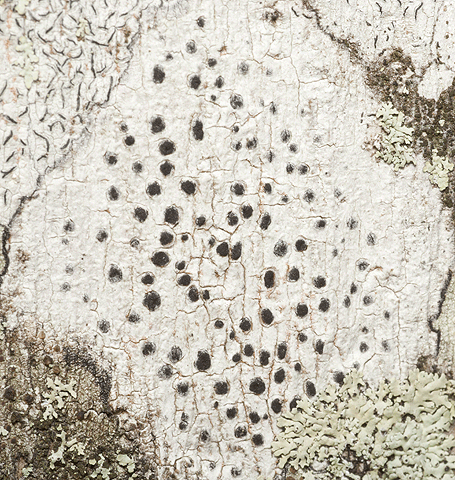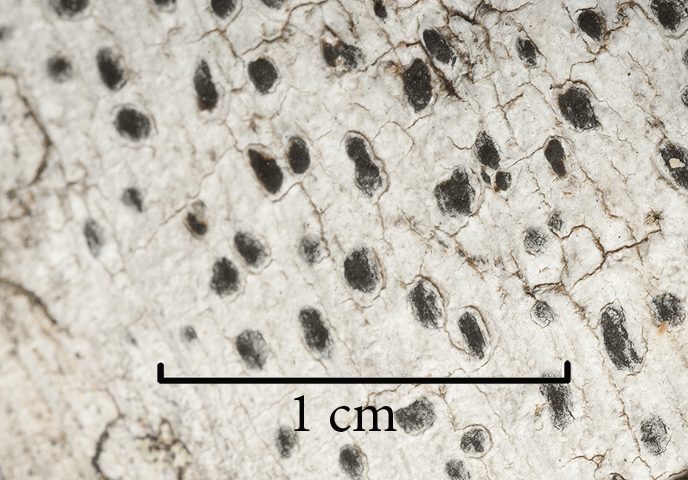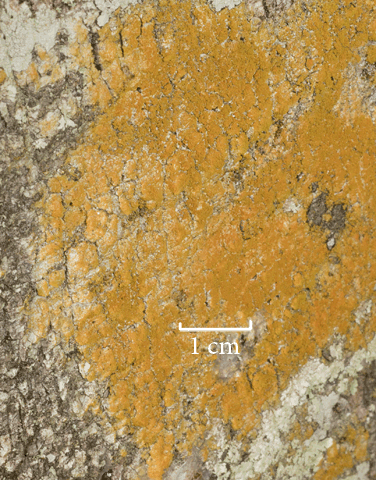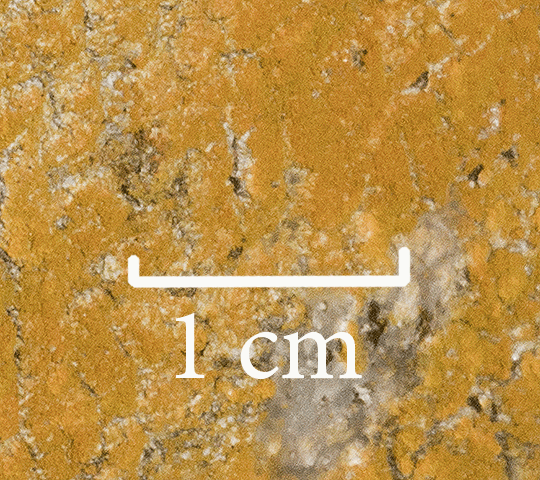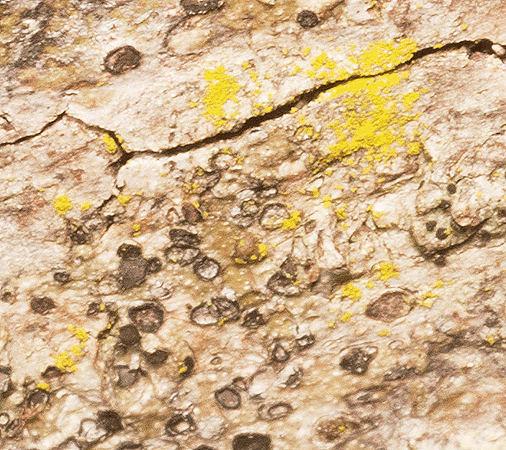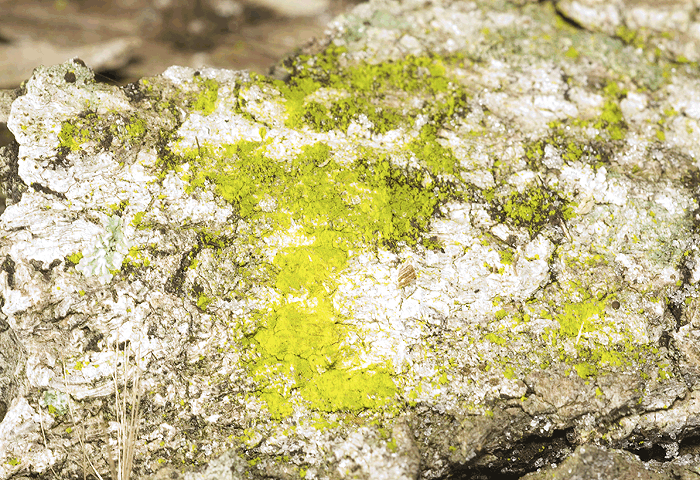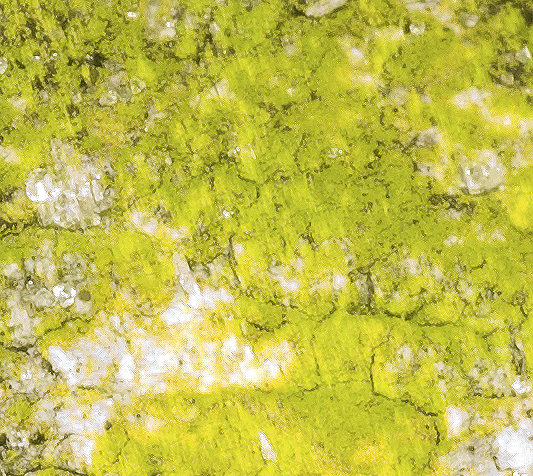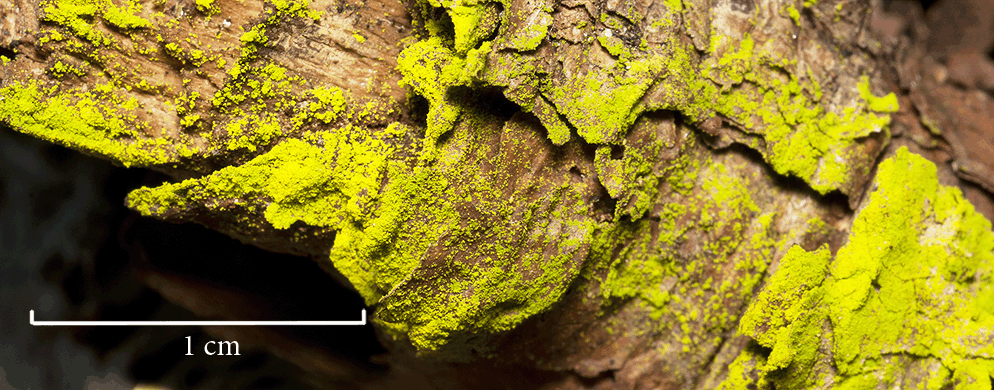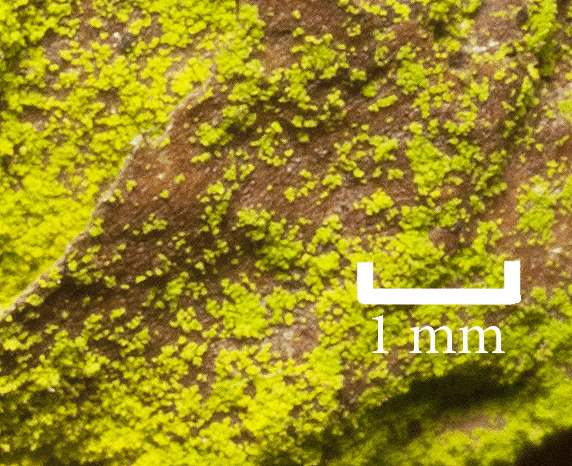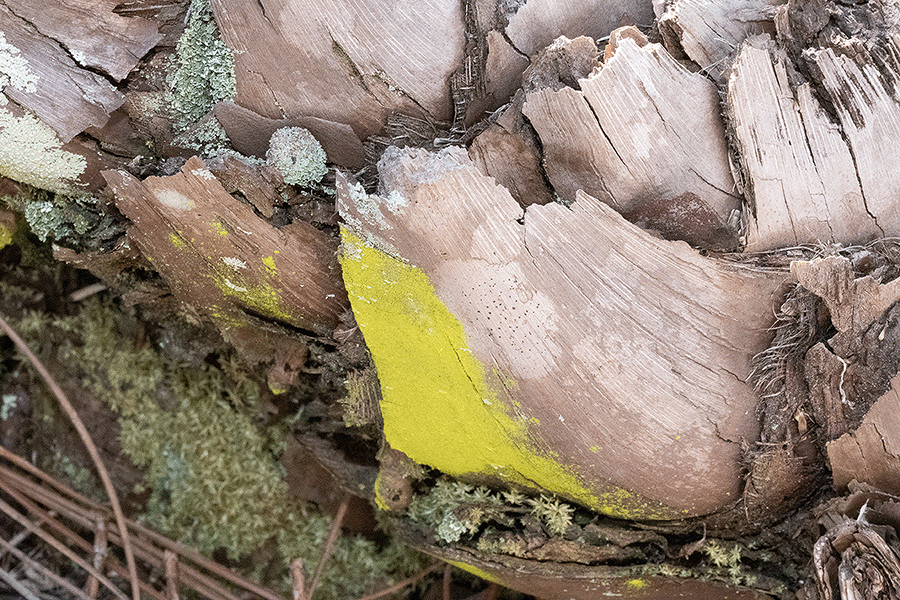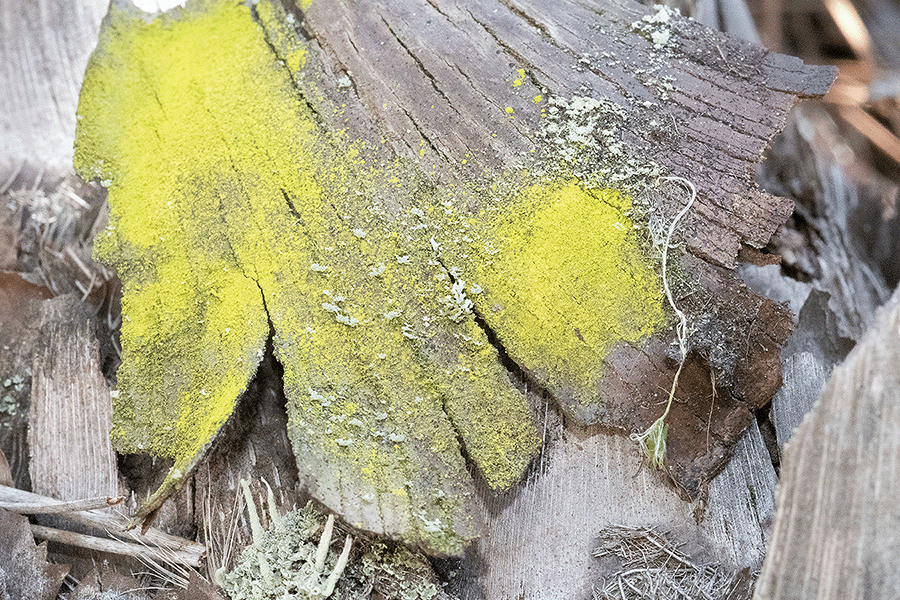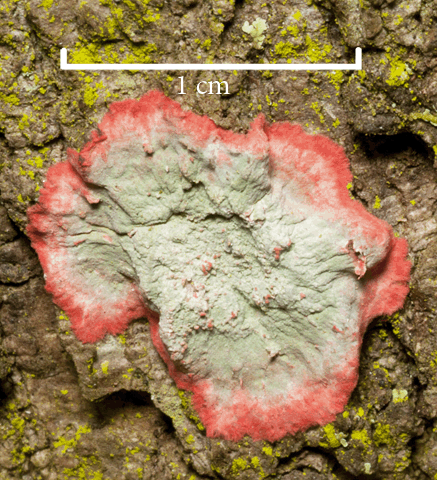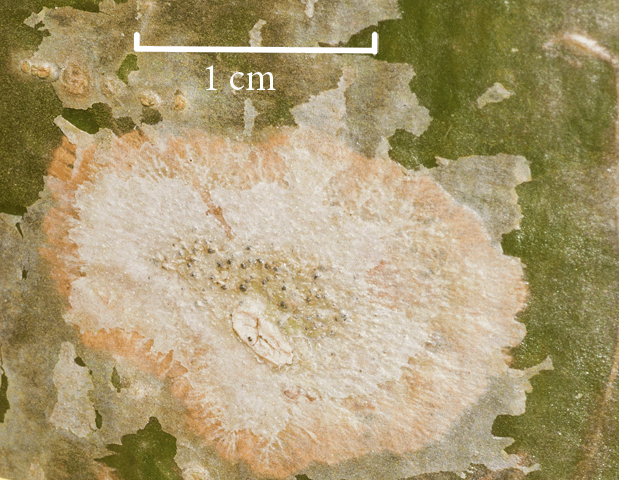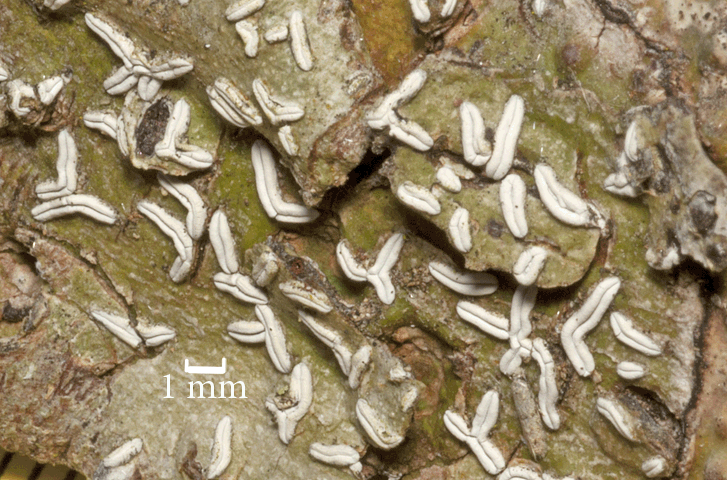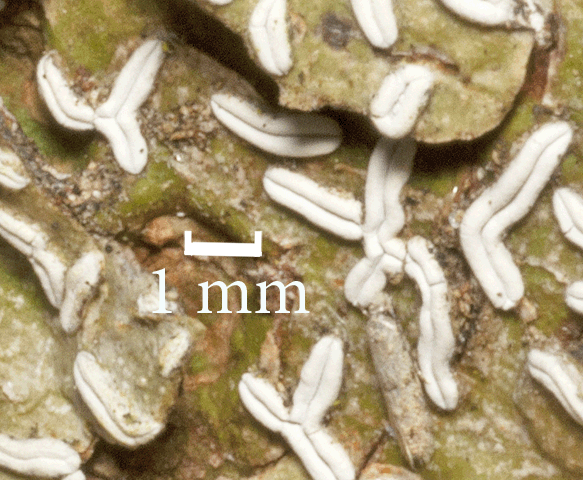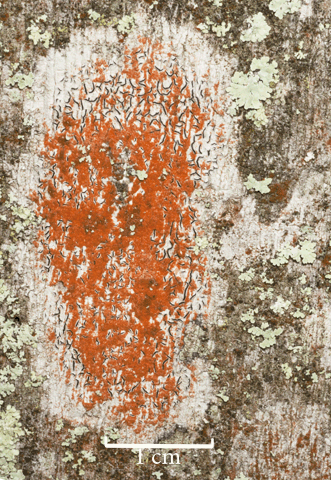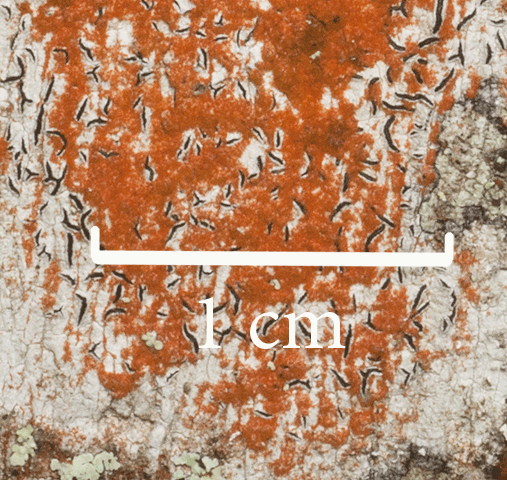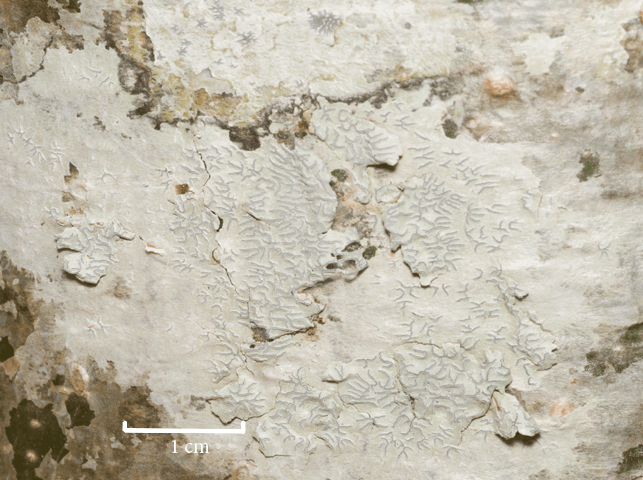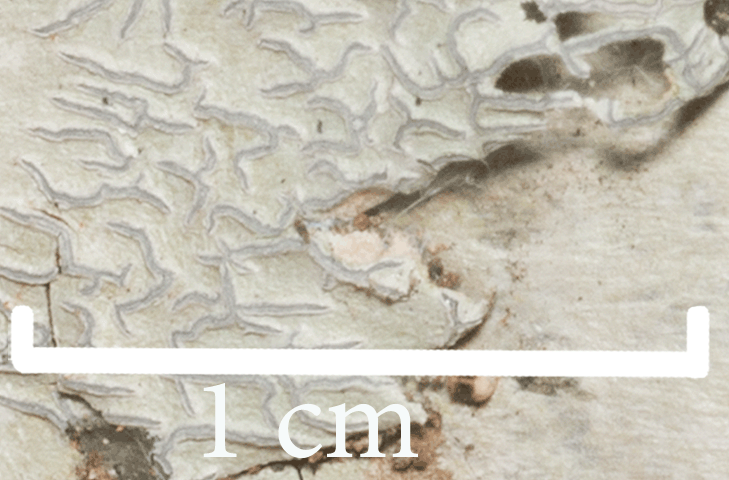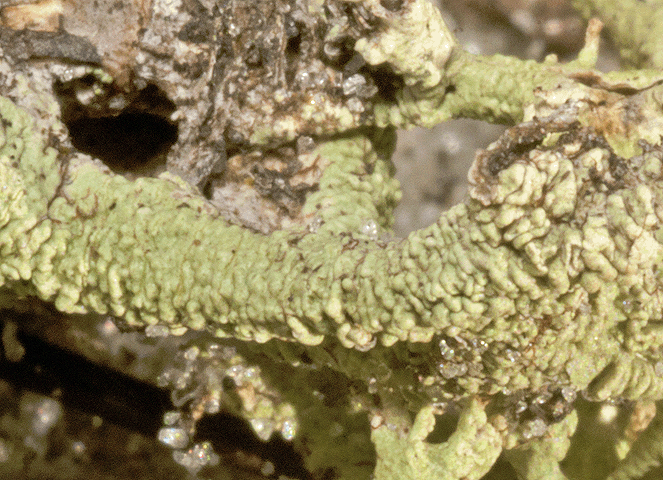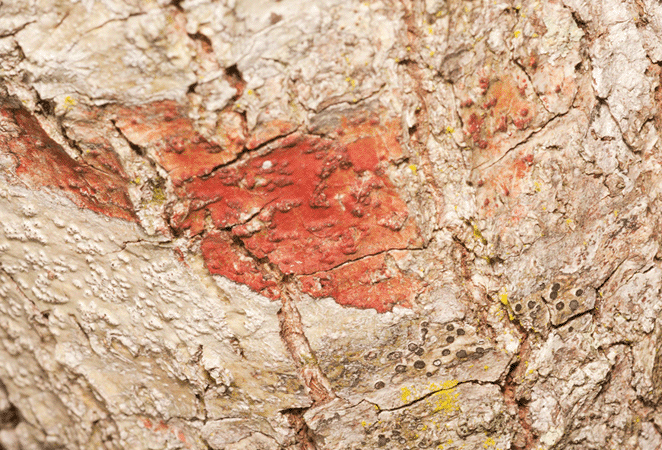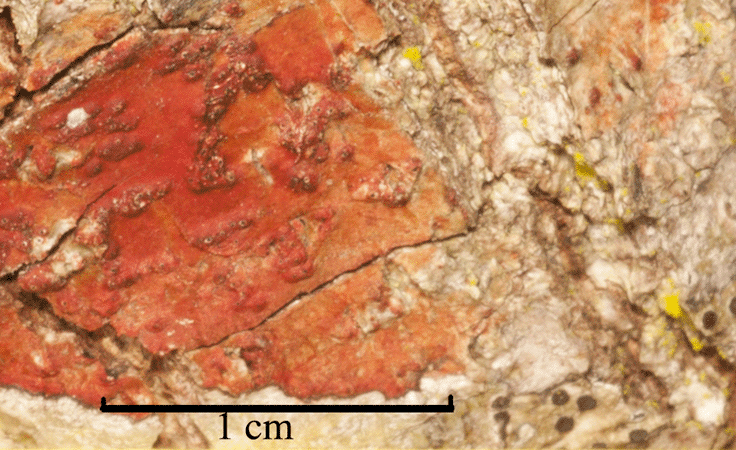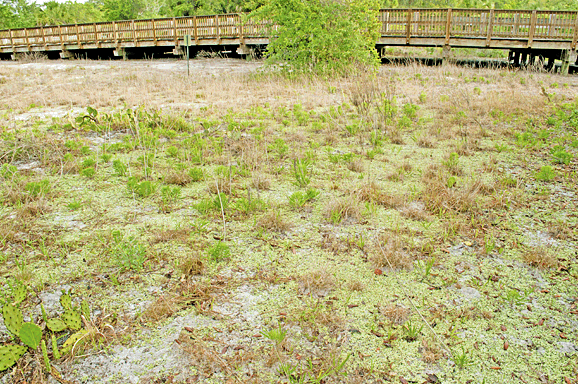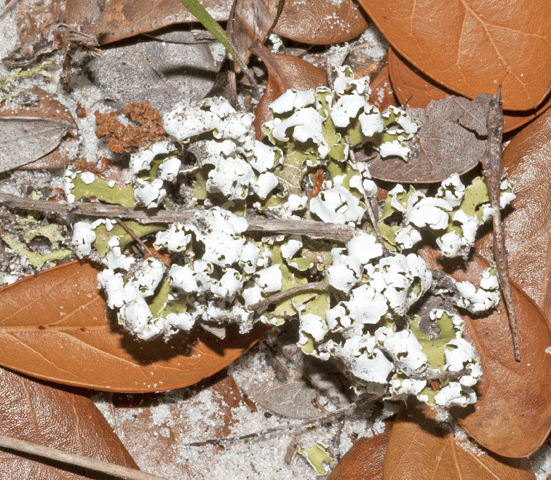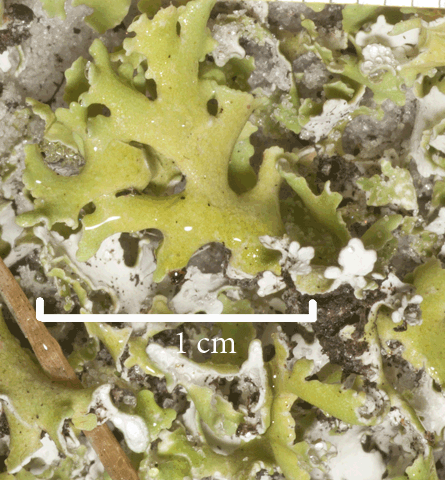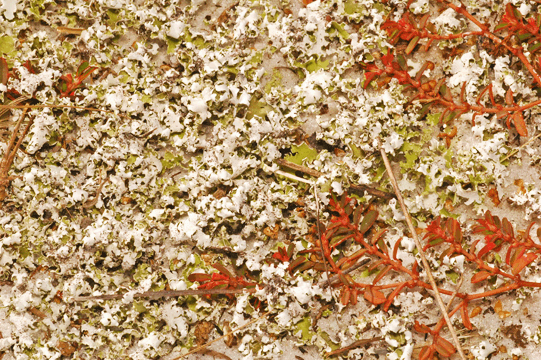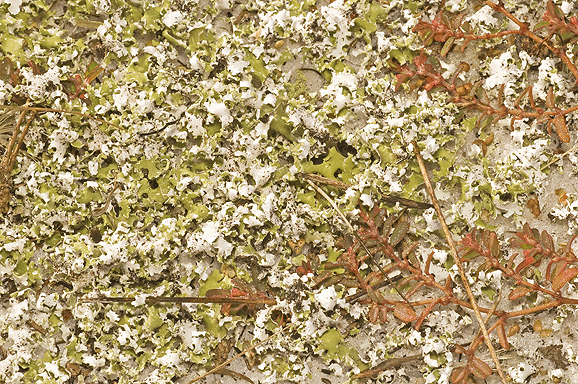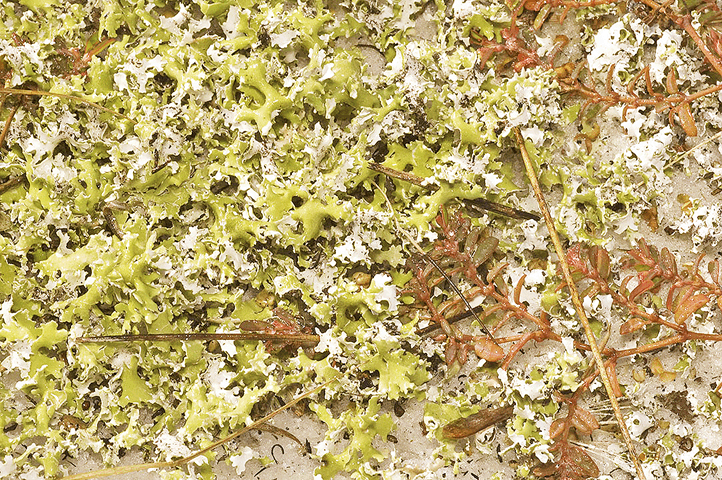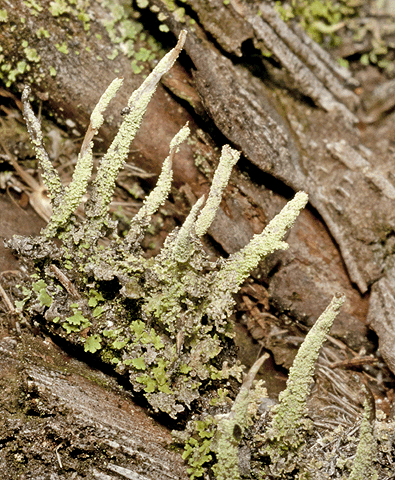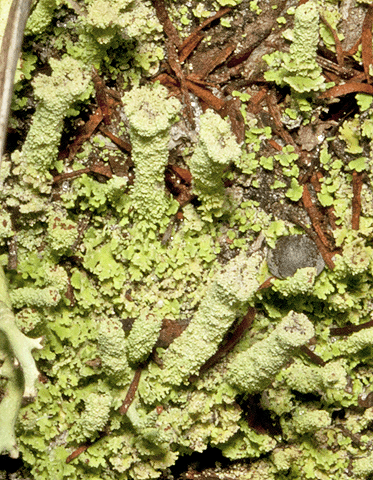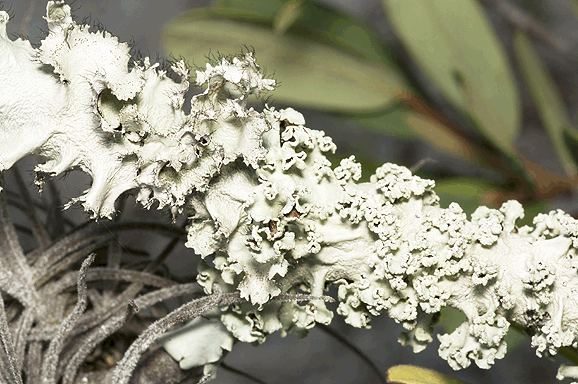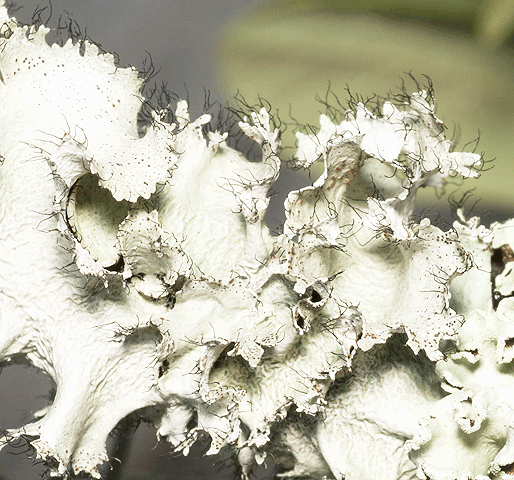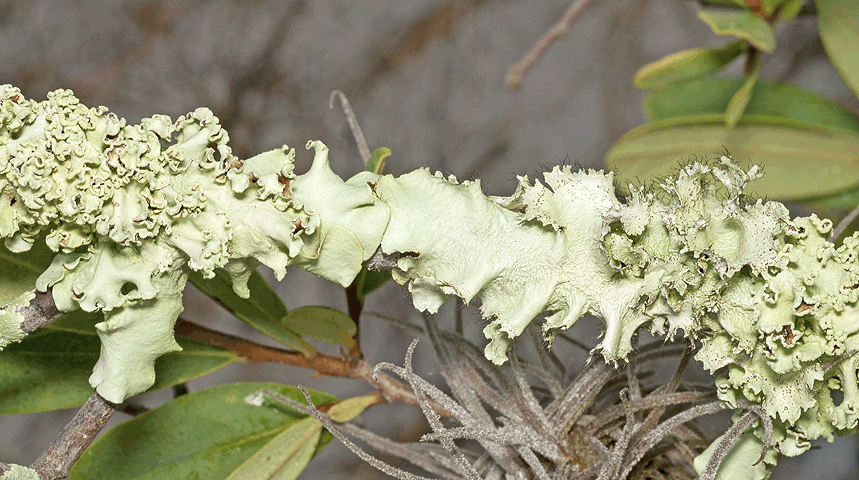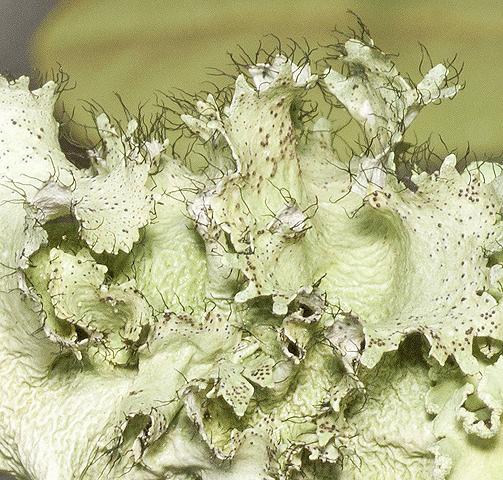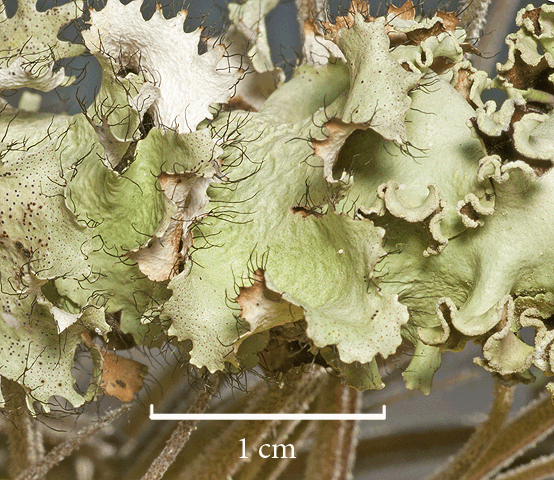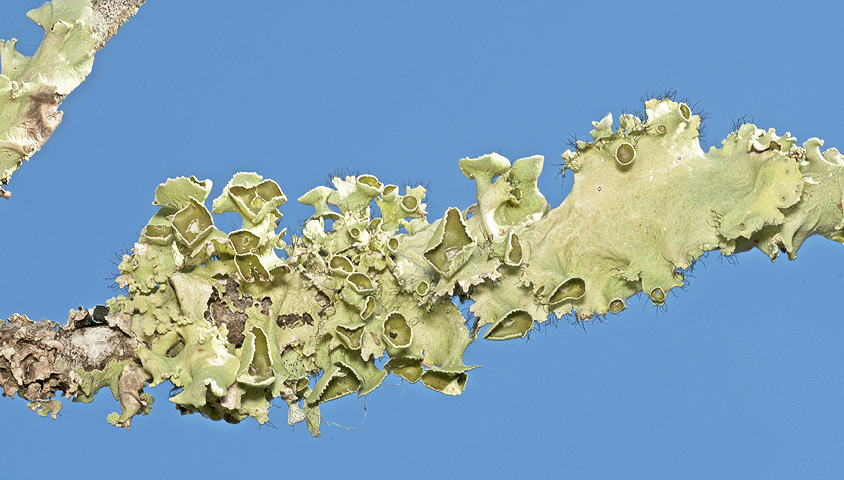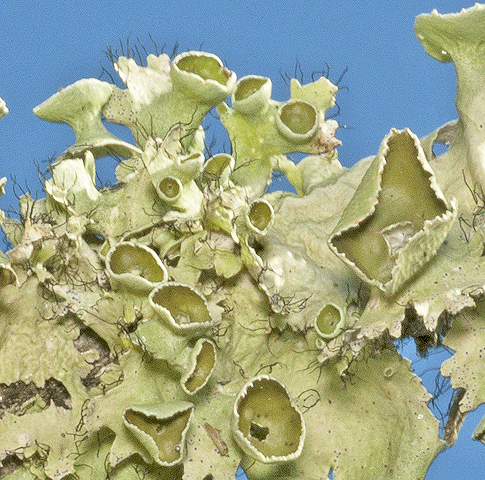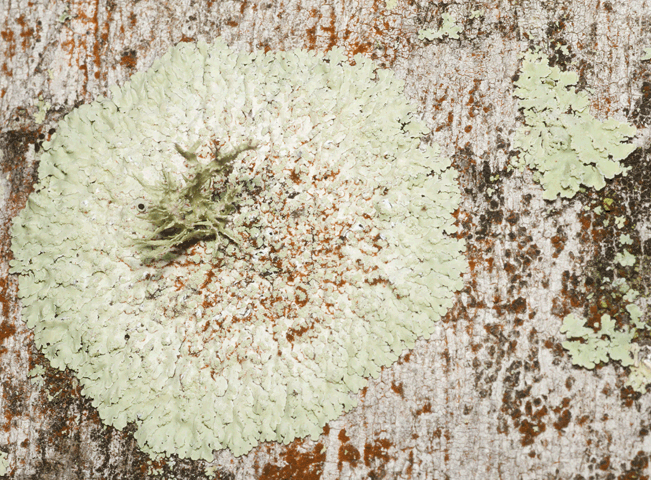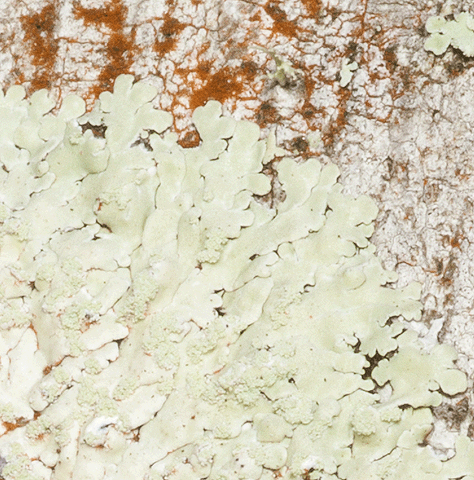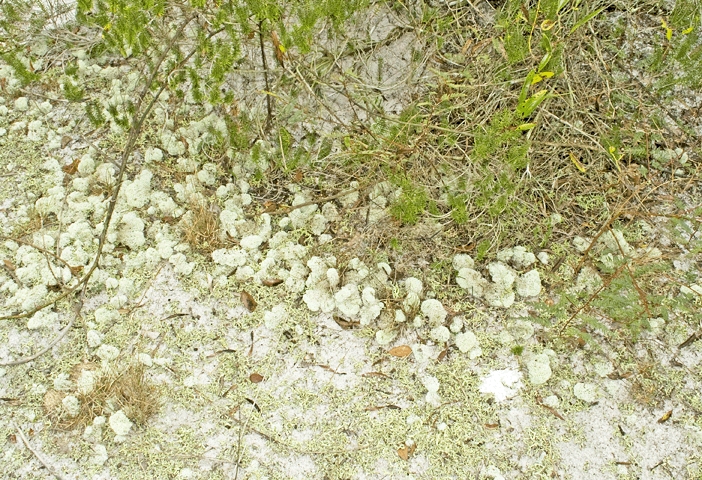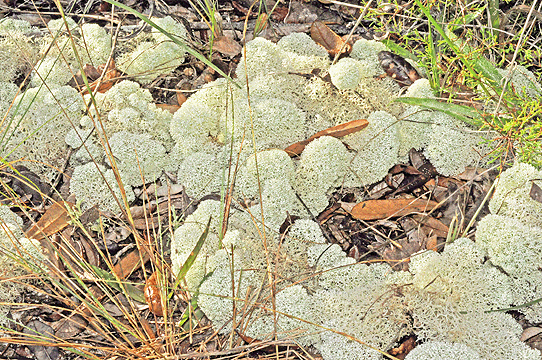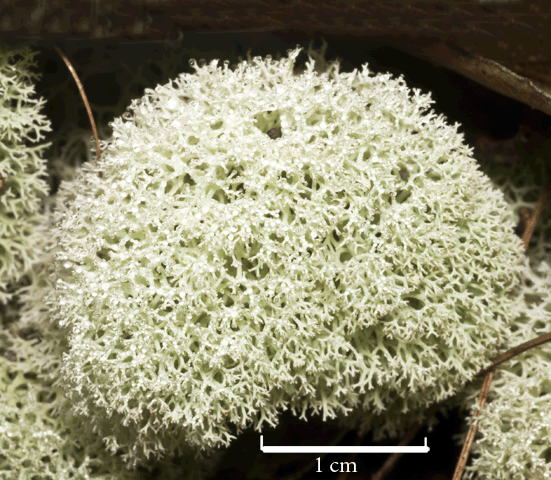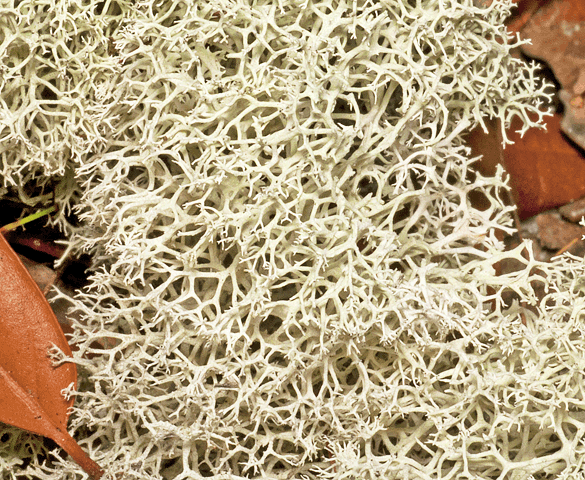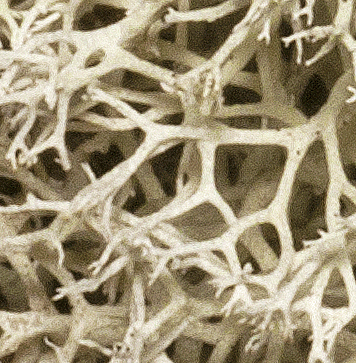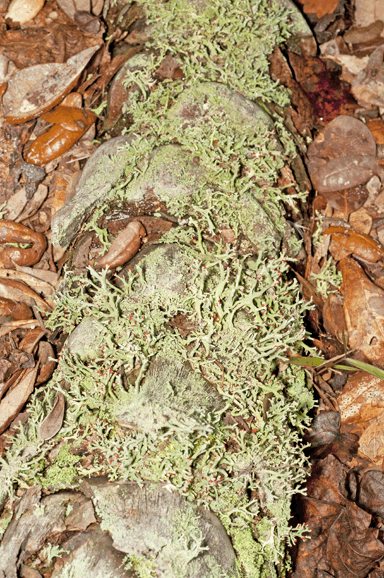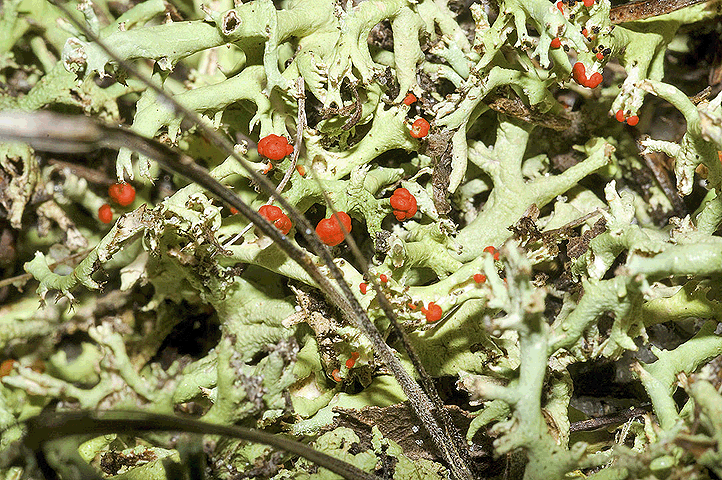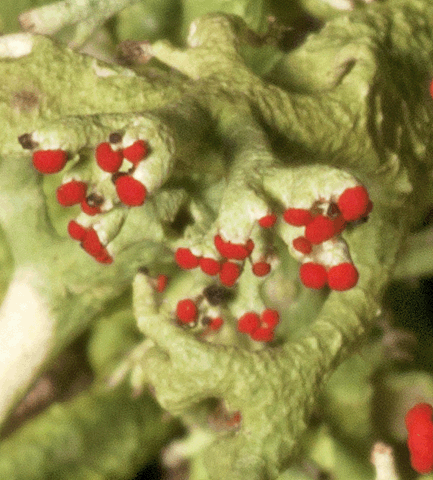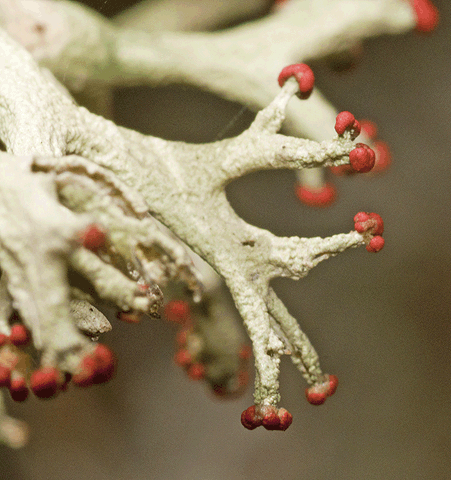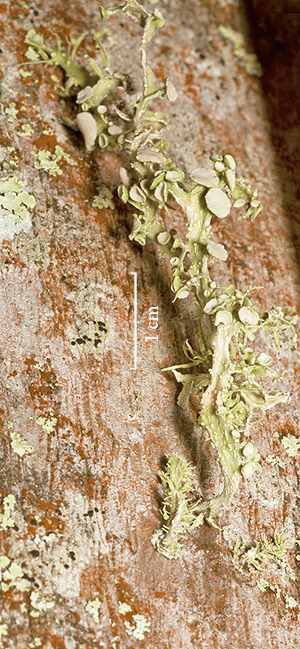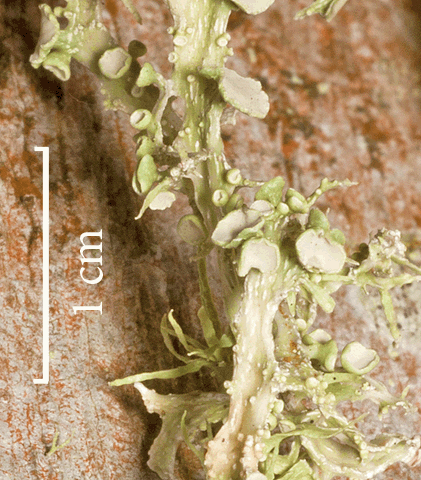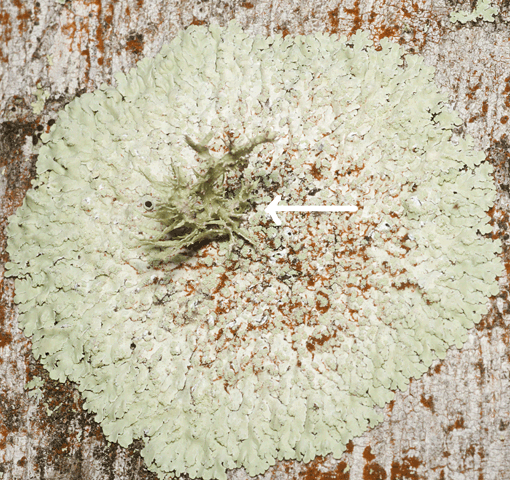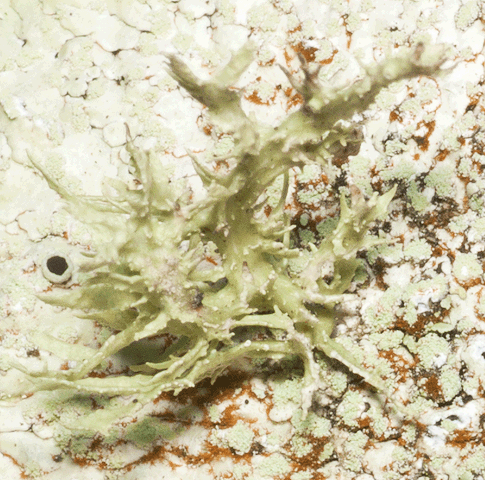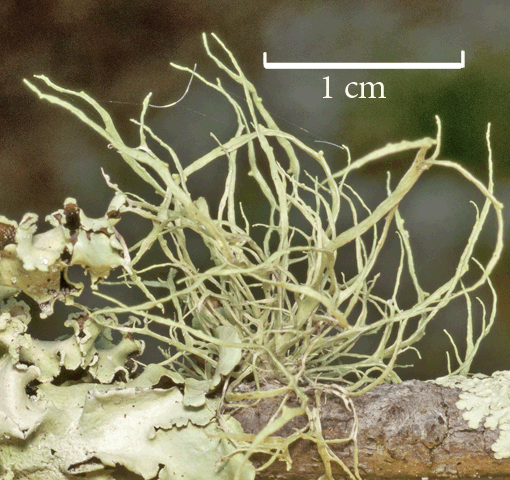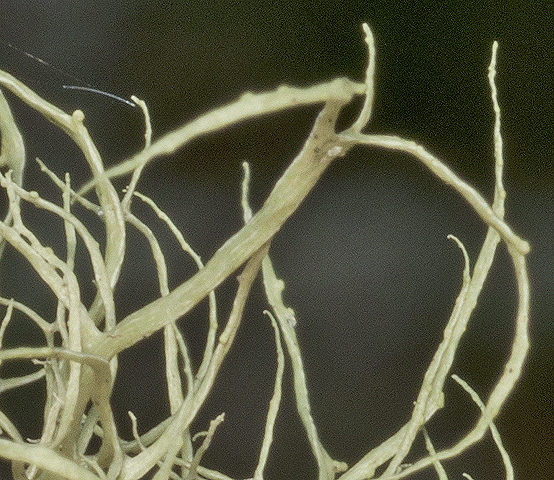Lichen Species in the Christopher B. Smith Preserve
Lichen Characteristics: Lichens are tiny mini-ecosytems consisting of hundreds of individuals of at least two different types of organisms:1) fungus and 2) photobionts (either a green alga or a cyanobacterium.) The fungus component ensures protection and regulates the supply of minerals and water. The photobionts photosynthesize, providing organic carbon. Click here to learn more about fungus and algae in the Smith Preserve.
Each lichen species has its own form and looks much different from the individual contributing organisms. Lichens are informally classified by the growth form of the thallus (body) as: 1) crustose ... paint-like), 2) foliose ... leafy, 3) fruticose ... branched, and 4) gelatinous ... thick and gluey. The physical and chemical properties of a substrate are very important in determining which lichens develop in a particular area. No one knows how many lichen species are on Earth, but estimates range from 13,500 to over 30,000. A survey of lichens growing in the Smith Preserve has just begun.
Interactions in the Smith Preserve: Lichens produce acids that slowly disintegrate the surface on which they grow. For that reason, they play an important role in breaking down rock and organic materials to form soil. They are an important energy source (food) for many animals including tiny invertebrates, deer, and some birds. Some birds use lichens to build nests. Some insects use lichens for camouflage. Where lichens cover the soil, they prevent the soil from drying out and help stabilize it for other plants to take root. To learn more about lichen soil crusts in the Smith Preserve, click here. Lichens have the ability to capture fog and dew, thus conserving moisture where water is scarce. Lichens accumulate and release nitrogen and phosphorous, required by many plants for healthy growth. In addition, lichens clean the environment by removing and storing air pollutants.

